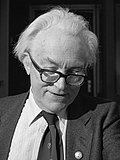1983 UK general election
|
|
|||||||||||||||||||||||||||||||||||||||||||||||||||||
|---|---|---|---|---|---|---|---|---|---|---|---|---|---|---|---|---|---|---|---|---|---|---|---|---|---|---|---|---|---|---|---|---|---|---|---|---|---|---|---|---|---|---|---|---|---|---|---|---|---|---|---|---|---|
|
|||||||||||||||||||||||||||||||||||||||||||||||||||||
|
|
|||||||||||||||||||||||||||||||||||||||||||||||||||||
|
All 650 seats in the House of Commons 326 seats needed for a majority |
|||||||||||||||||||||||||||||||||||||||||||||||||||||
| Turnout | 72.7% ( |
||||||||||||||||||||||||||||||||||||||||||||||||||||
|
|||||||||||||||||||||||||||||||||||||||||||||||||||||

Colours denote the winning party, as shown in the main table of results.
|
|||||||||||||||||||||||||||||||||||||||||||||||||||||
|
|||||||||||||||||||||||||||||||||||||||||||||||||||||
| October 1974 election • MPs |
| 1979 election • MPs |
| 1983 election • MPs |
| 1987 election • MPs |
| 1992 election • MPs |
The 1983 United Kingdom general election was held on 9 June 1983. It gave the Conservative Party under Margaret Thatcher the most decisive election victory since that of Labour in 1945.
Thatcher's first four years as prime minister had not been an easy time. Unemployment increased during the first three years of her term and the economy went through a recession. However, the British victory in the Falklands War led to a recovery of her popularity; the economy had also returned to growth. By the time Thatcher called the election in May 1983, the Conservatives were most people's firm favourites to win the election. The Labour Party had been led by Michael Foot since the resignation of James Callaghan. They had fared well in opinion polls and local elections during this time, but issues developed which would lead directly to their defeat. Labour adopted a platform that was considered more left-wing than usual. Several moderate Labour MPs had left the party to form the Social Democrats. The Social Democrats then formed the SDP–Liberal Alliance with the existing Liberal Party.
The opposition vote split almost evenly between the SDP/Liberal Alliance and Labour. With its worst performance since 1918, the Labour vote fell by over 3 million from 1979 and this accounted for both a national swing of almost 4% towards the Conservatives and their larger parliamentary majority of 144, even though the Conservatives' total vote fell by almost 700,000. This was the most recent election where a party in government increased its number of seats until 2015.
...
Wikipedia




